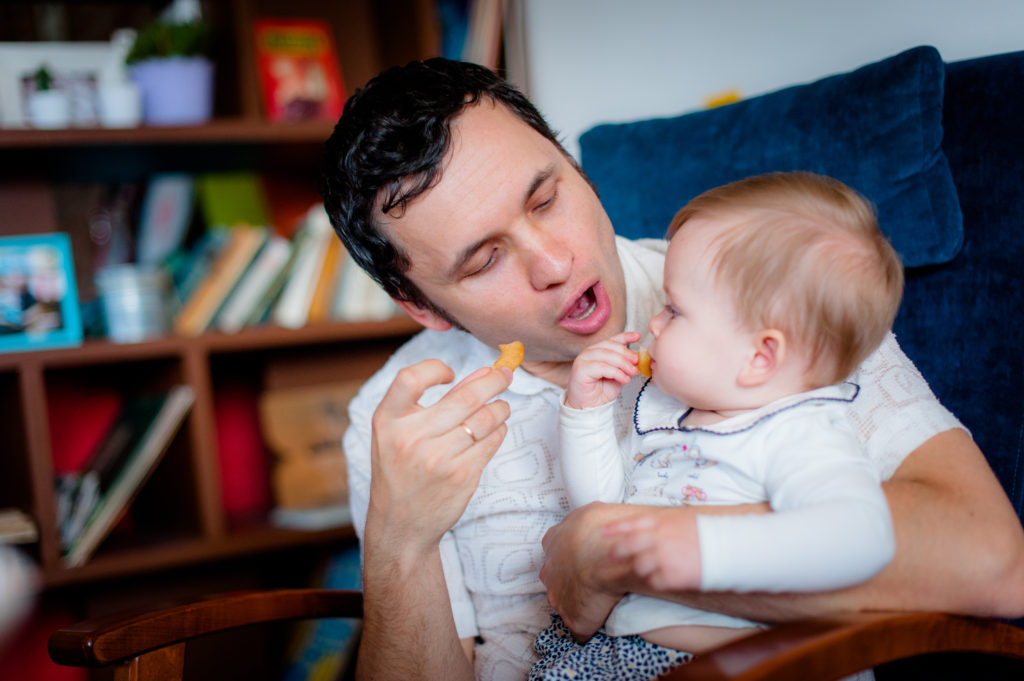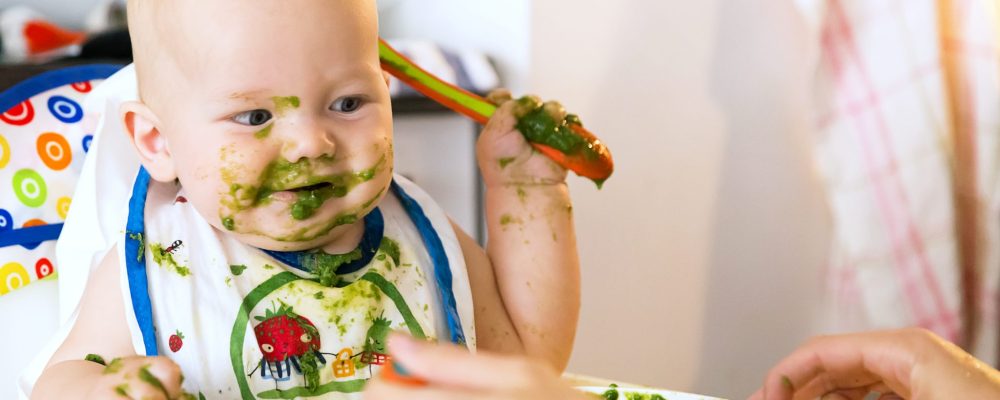Feeding your baby and toddler can seem like a rocket science. The number of supplies, bottles, sippy cups, bowls, spoons and bibs in the shop is never-ending. And how about the baby food? What’s best for my baby? When to start weaning and how? How can a new mom get her head around all of it? Let me give you few basic tips on how to successfully kick off weaning process to turn your baby into a good eater for years to come. Here comes a short baby weaning guide packed with all essential info you need.
When is the right time to start baby weaning?
Every baby is different and there’s no universal guide or time frame to anything. Time charts and recommendations are there only to give you some basic idea so don’t take them literally. Your baby might be ready for different things in different time and she might have a completely different opinion on right time and right food. If you’re wondering when to start baby weaning you should simply follow your baby’s lead. Good preparation is a key to the success. As much as you’re happy to enjoy your meal by yourself when baby’s asleep you should really include the youngest member of your family to join in during a mealtime as often as you can. Let your baby watch you when you eat and she will show her interest when she’s ready.
- You can get a high chair with recline positions so your baby can “sit at the table” with you during meal times early on, similar as if she was sitting in a car seat (e.g. as early as 3 months)
- Give your baby a soft silicone baby spoon to play with
- Offer some food with gentle taste to your baby when she shows interest
2 basic approaches to baby weaning
In general there are two types of baby weaning and you should choose the one that feels more comfortable and natural to you. If your baby doesn’t like it, switch to the other one. There’s no pressure. Start easy and never force your baby to eat.
- Traditional weaning with blended baby food
- Baby led weaning with more finger foods

Daddy feeding his baby
Traditional baby weaning
This is the way where you mix, mash or blend food and spoon feed your baby. You start when your baby seems ready and shows interest. This usually happens anywhere between 4 to 9 months. Start with sweet vegetables, e.g. baby carrots, cook or steam them, blend them and offer to your baby. Your baby might seem surprised by the new taste and she won’t know how to process the food in her mouth to make it go down her throat. 1 or 2 spoons for the first day is a good start. She will be eating away by the end of the first or second week. In case she won’t, give her a break and try again few days later. Annabel Karmel is one of my favourite source of ideas for baby food.
Advantages:
- You can easily avoid salt and spices in first months of weaning as you’re preparing baby food separately
- You keep better track of how much your baby eats
- Babies usually start eating quite a big portions of food very soon
- After your baby’s eaten entire portion of his food you know he won’t be hungry for next 2 or 3 hours
Baby led weaning
Some babies simply don’t like being spoon fed. They’re demonstrating their independence from very start and they want to eat by themselves. Sure it’s a little bit more messy than if you were feeding her but you save loads of time on food preparation. Baby led weaning means that you offer your baby food that you are eating, especially things that she can hold and eat by herself. You let the baby choose what to eat.
Advantages:
- No separate food preparation
- No mixing, mashing or freezing
- Babies love playing with food so it’s certainly a lot of fun
- Babies usually try wider variety of tastes and foods sooner and they eat what they like
Food allergy – do I need to worry?
Every mum knows her baby the best. This means that only mum can truly reply to this question. There are many factors that can play role in developing food allergy. You also need to use your common sense and trust your gut feeling.
Risk factors
- Allergy running in a family – even if it’s not food allergy
- Baby skin being too sensitive – you can say there might be an issue if baby is having problems with skin rash or eczema from early days
- Baby having tummy aches or reacts sensitively to food that mum’s eating while breastfeeding.
If there are some risk factors, please be careful when introducing new foods, especially allergens. This doesn’t mean that you must postpone certain food introduction, just make sure you’re not giving too many allergens at once for the first time. Also don’t give too much of “risky” food when offering it for the first time to your baby. This way you can spot if there is any reaction and you can say much easier which food is causing trouble.
Turn your baby into a good eater
At the beginning of weaning process – and it doesn’t matter if it’s a traditional one or a baby-led one – there are three good practice rules that will help you turn your baby into a good eater later on.
First and most important rule is to wait with very sweet food introduction until after your baby got used to healthy food, especially veggies. I say “very sweet” because basically all veggies are sweet. But they’re less sweet than fruits and certainly much much less sweet than anything with sugar in it.
Second rule is to turn feeding time into happy time. Babies love when you talk to them and when you pay attention to them. Add some happy music in the background and you can both enjoy having a good time together.
Third rule is: Do not stress about solid food your baby doesn’t want to eat, especially during first two years. Be patient and keep offering different foods. Baby’s taste buds might change from one week to another so they can start loving something they didn’t like at all before and vice versa. Baby still gets many important nutrients from milk too so you can relax if they still like their usual milk, especially if it’s mummy’s milk.
Portion sizes
How much does your baby need to eat? You know that I’m going to say that it’s highly individual. Even your child’s height and weight may vary widely. Is your child fit, strong and healthy? If the answer is YES, you’re doing it right.
Generally speaking, after your baby has eaten good portion of food, he shouldn’t get hungry for the next 2 or 3 hours. Of course you can offer a small healthy snack during this time. For example, if your baby eats a bowl of porridge for breakfast at 9 o’clock (could be around 200ml), he should be happy until the noon. Offer him some fruit between 10 and 11. If he doesn’t seem to be hungry enough at lunch time, try to either leave out the snack or postpone lunch by half an hour. The other way round, if your baby gets too hungry too soon, increase the portion for breakfast or offer a bigger sized snack, e.g. fruits & some carbohydrates like rice or corn snack or piece of bread. Just make sure it doesn’t prevent him from eating his dinner as it’s usually the most nutritious food of the day.




